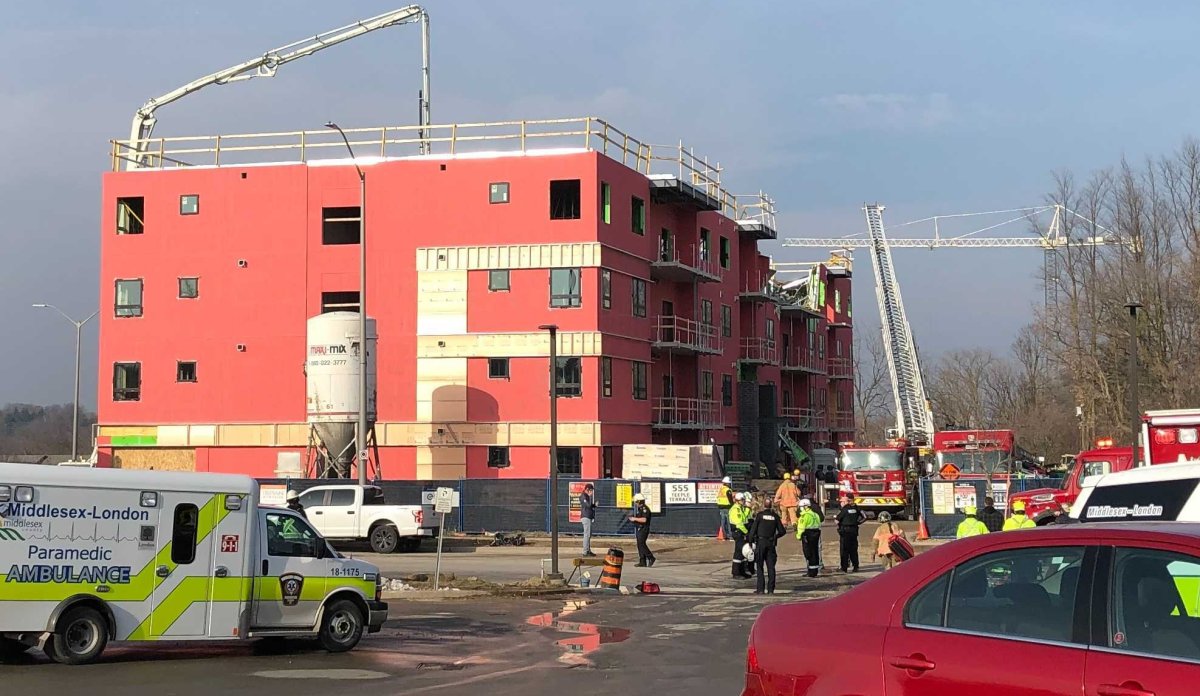A 2020 building collapse in west London that killed two and injured four has resulted in a combined $400,000 in fines for two regional construction companies.

On Dec. 11, 2020, a section of a building that was under construction, located at 555 Teeple Terrace, collapsed to the ground during a concrete pour, trapping several workers underneath.
Two men, John Martens, 21, of Langton, and Henry Harder, 26, of Tilsonburg, were killed in the collapse. Families of two of the men injured launched a $2-million lawsuit in September 2021.
Two Oxford county construction companies, iSpan Systems LP (iSpan) and East Elgin Concrete Forming Ltd. (East Elgin), both pleaded guilty in court following a Ministry of Labour investigation.
According to the Ministry, iSpan “failed to ensure that a building, structure or any part thereof, was capable of supporting any loads that may be applied to it.”
East Elgin “failed to provide proper information, instruction and supervision, specifically on the use of proper concrete measuring techniques on the project.”
iSpan was fined $260,000 and East Elgin was fined $140,000. In addition, a 25 per cent victim fine surcharge was imposed, which is credited to a provincial fund to assist victims of crime.
A news release from the ministry lays out what lead to the collapse, saying that the structural steel frame from iSpan used a thinner and deeper 16-gauge shallow track for the stud pack, rather than the 14-gauge deep track specified in approved engineering drawings.
Welds between the studs were also placed lower than specified, which may have reduced capacity as well.
East Elgin, responsible for the concrete pour itself, employed a laser level and failed to account for the deflection of the steel frame under the weight of the concrete.
As a result, workers assumed that the concrete wasn’t deep enough in certain locations, leading to more concrete being poured then the frame was specified for.
“The use of a dipstick would have remedied this problem by providing a true reading of concrete depth during the deflection process,” reads a report from the Ministry of Labour, Immigration, Training and Skills Development.
An investigation by the ministry found that the poured concrete exceeded specifications by a “considerable amount,” contributing to the collapse.
Additionally, loads transferred from the stud packs to a roof beam support exceeded its capacity, leading to collapse.
“If the wall had been fabricated as designed, it would have possessed a sufficient margin of safety to account for the overpouring of concrete and the collapse could have been avoided.”




Comments